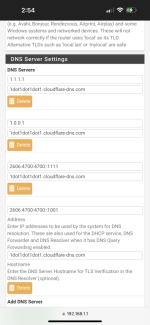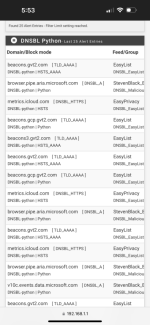I will get Snort going tomorrow
You'll be fine with your knowledge and experience. It will work, but only for what it can see. Nothing encrypted. pfBlockerNG is perhaps more efficient on a home network. It doesn't care if the data is encrypted or not. Blocklist IP or DNS match - out. This is what TrendMicro's malicious sites blocking is doing in AiProtection on Asus routers. What you can target with Snort is common exploits and malicious behavior. Look at available rules options. This is what TrendMicro's IPS is doing in AiProtection. What TrendMicro doesn't allow is custom configurations - available to you in pfSense. Also your advantage - you don't need 3rd party assistance and data sharing.
For home use similar setup can be re-created on an Asus router with Asuswrt-Merlin firmware support:
- pfBlockerNG IP blocking - Skynet + AiProtection
- pfBlockerNG DNS blocking - Diversion/AdGuard + AiProtection, Pi-hole on RPi as option
- Unbound DNS Server - available as script, plus blocking option
- DNS interception - available as DNSFilter
- NTP interception - available as local NTP server
- DoT to upstream - available even in stock Asuswrt
- PIE schedulers - similar available as Cake (with some hardware limitations)
- networks stats packages - available as scripts in different forms
May not be as reliable (limited hardware home router), not as configurable (less options), requires data sharing (to TrendMicro) and uses wrong storage media (USB stick, SSD for better results), but can de done starting from $100 hardware investment (RT-AC66U B1) and with not much network knowledge. This is what this forum is mostly about.




